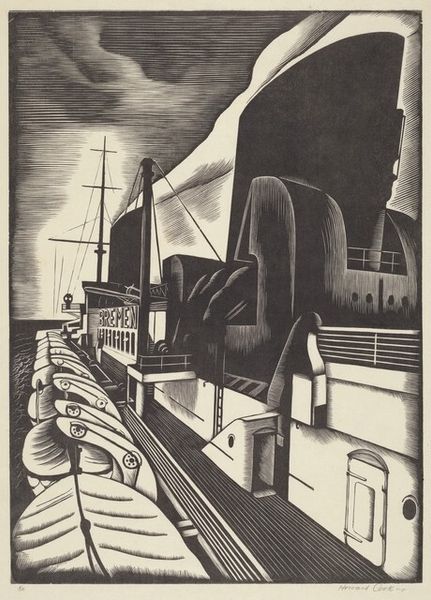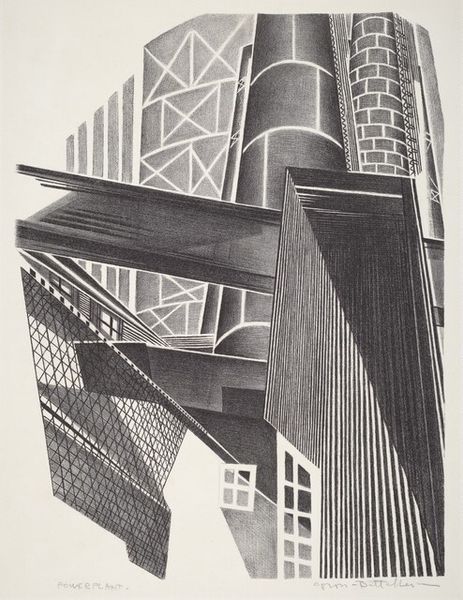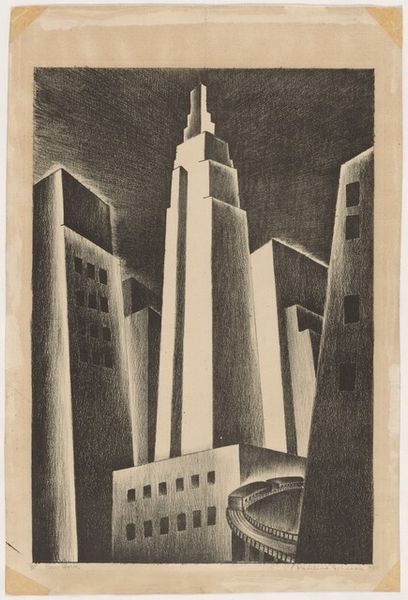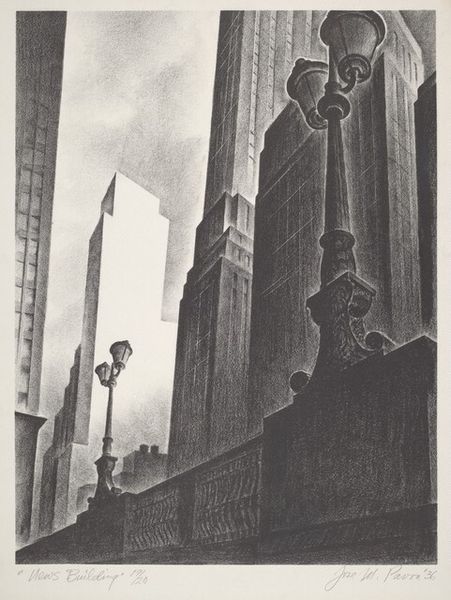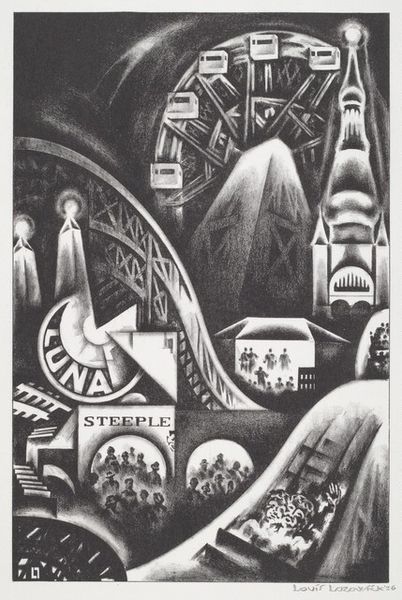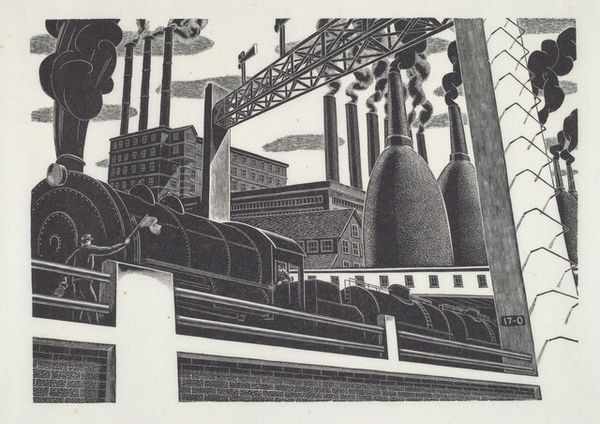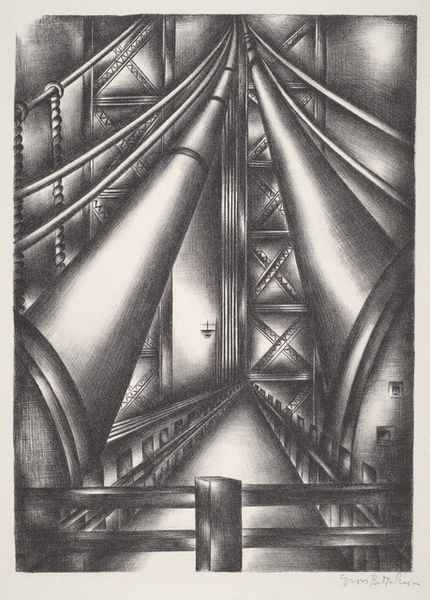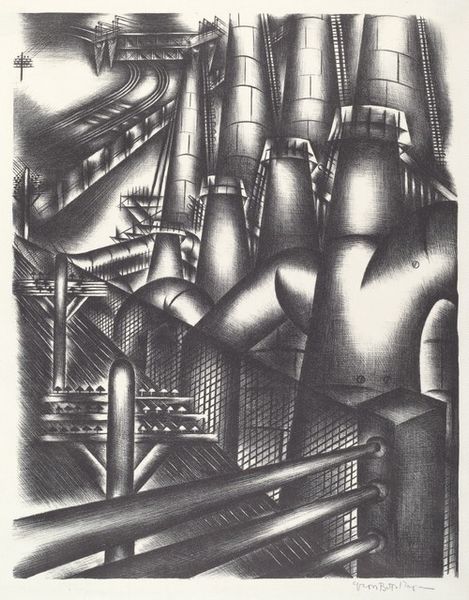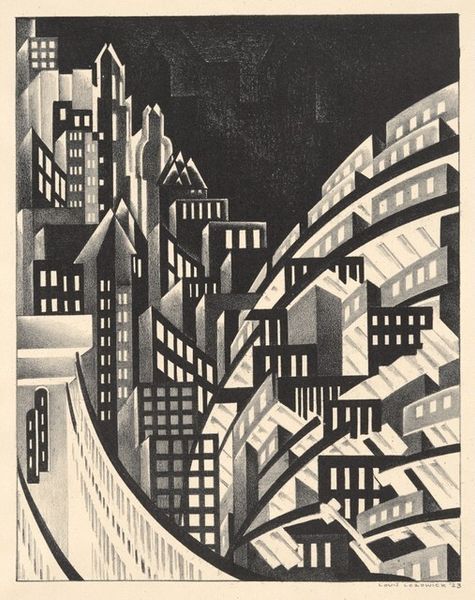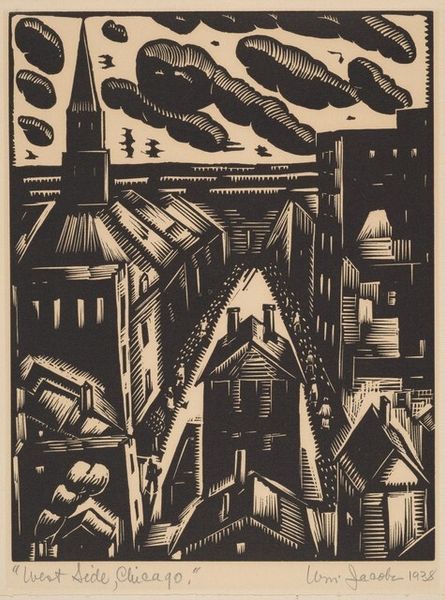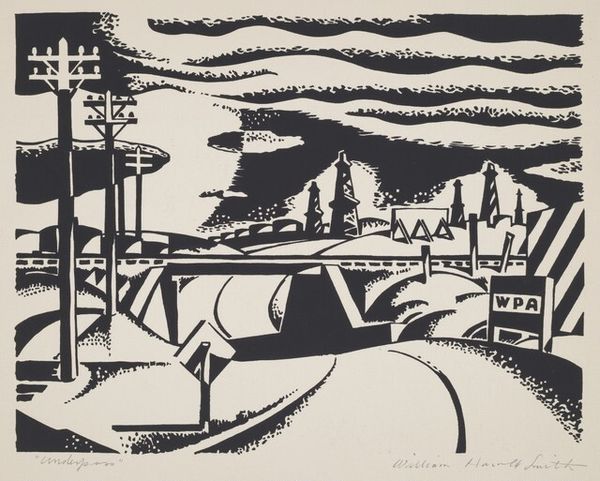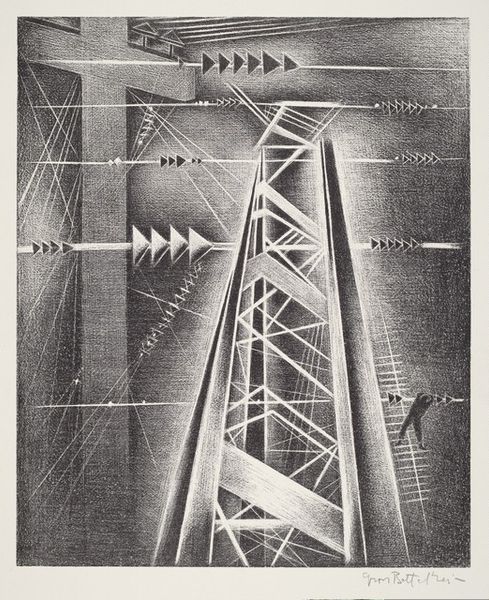
graphic-art, print, etching
#
graphic-art
# print
#
etching
#
cityscape
#
modernism
Dimensions: plate: 27.9 × 18.3 cm (11 × 7 3/16 in.) sheet: 35.5 × 29.2 cm (14 × 11 1/2 in.)
Copyright: National Gallery of Art: CC0 1.0
Curator: Oh, there’s a brooding quality about this image, like a still from a 1930s crime drama. The heavy blacks and grays, the imposing structures... it speaks of industry, but also a certain isolation, wouldn’t you say? Editor: You’ve tuned right into it. This is “Queensboro Bridge,” an etching by Howard Cook from 1930. It's a striking example of how artists were capturing the changing face of urban America in that era, rendered in graphic art style using black ink on paper. Curator: It feels monumental, but at the same time kind of vulnerable. The bridge is looming, yet the lone figure walking along the road makes it seem...fragile? It's almost as if the architecture overshadows human experience. Editor: The composition definitely creates that feeling. The bridge and that towering chimney, dominating the skyline. Bridges, historically, are potent symbols. Connections between disparate points but this feels different, doesn't it? Almost ominous with the industrial backdrop. Curator: It's a statement about man's place in this new industrialized landscape. A lone figure juxtaposed with industrial architecture that echoes through time. Those vintage cars feel very Edward Hopper actually, isolating, separated, symbolic of freedom, but still confined. Editor: Precisely. And that isolation speaks volumes about the period, reflecting both progress and its human cost. But do you feel there's a glimmer of optimism as well? The bridge itself, after all, facilitates connection. Curator: I’d argue it’s more about the acceptance of progress—this inevitable march of industry. You sense how Cook balances awe and unease. He's showing it with an honesty and open vision—at progress and price. Editor: Yes. It really sums up the complex, sometimes contradictory emotions of the Modernist era. Seeing beyond just pretty pastoral landscapes. I will ponder these visual dynamics a bit more… Curator: Exactly! Art's power is about seeing more of life's landscape for our individual mindscape.
Comments
No comments
Be the first to comment and join the conversation on the ultimate creative platform.
